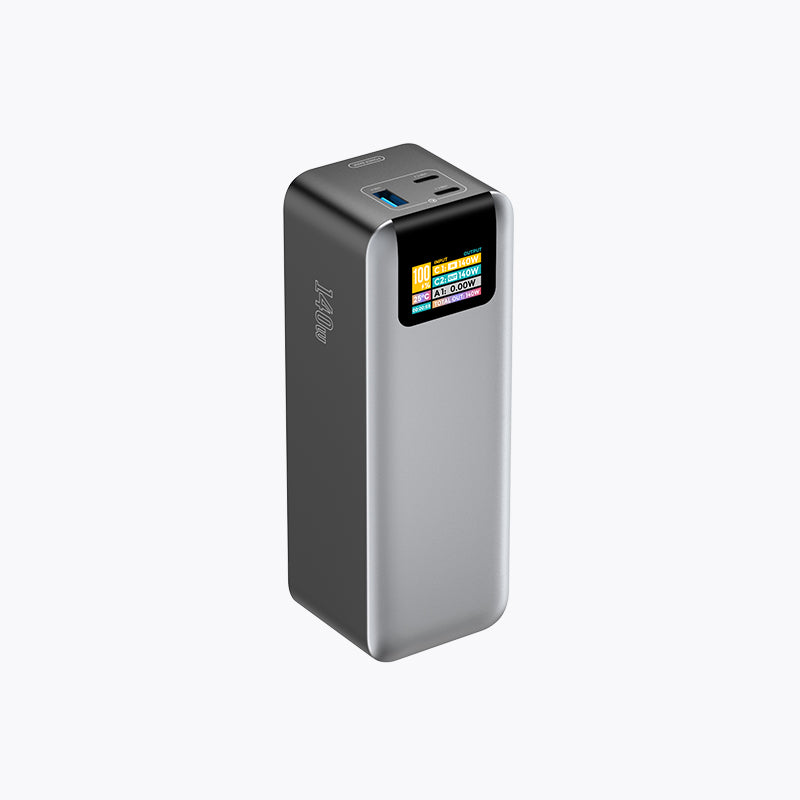The journey of a power bank from raw materials to a finished product involves multiple stages, each critical to ensuring the device's quality, performance, and safety. This blog post will walk you through the comprehensive production process of power banks, highlighting the key steps and technologies used in their manufacturing.
1. Design and Prototyping
The first step in the power bank production process is design and prototyping. This stage involves:
- Conceptual Design: Engineers and designers create the initial blueprint of the power bank, focusing on its capacity, size, features, and aesthetic appeal.
- Prototyping: Once the design is finalized, a prototype is built to test the feasibility of the design. This prototype undergoes rigorous testing to ensure it meets the required standards.
2. Raw Material Sourcing
After the design is approved, the next step is sourcing raw materials. This includes:
- Battery Cells: The core of the power bank, usually lithium-ion or lithium-polymer cells, are sourced. These cells come in various models like 21700, 18650, or 12680, depending on the design and capacity requirements.
- PCBs (Printed Circuit Boards): The heart of the power bank’s electronic control, PCBs are crucial for managing power flow and ensuring safety.
- Casing Materials: Depending on the design, materials like plastic, aluminum, or composite materials are sourced for the outer casing.
3. Battery Cell Preparation
Once the battery cells are sourced, they undergo preparation:
- Sorting: Battery cells are sorted based on their specifications like voltage and capacity. Advanced sorting machines ensure that only cells with matching characteristics are used together.
- Welding and Assembly: The sorted cells are welded together using precision techniques like laser spot welding. This ensures strong and reliable connections between cells, which is crucial for safety and performance.
4. SMT and PCB Assembly
The assembly of the PCB, which controls the power bank’s functionality, is a key step:
- SMT (Surface Mount Technology): In this process, electronic components are mounted onto the PCB. This includes resistors, capacitors, and microcontrollers that manage the power bank’s charging and discharging cycles.
- Testing: The assembled PCB is tested for functionality. This includes checking for correct voltage regulation, short circuits, and other potential issues.
5. Battery Packaging (PACK Line)
After the PCB and battery cells are prepared, they are brought together in the PACK line:
- Assembly: Battery cells and PCBs are assembled into a single unit. Connectors, protection circuits, and other necessary components are added.
- Aging Process: The assembled battery pack is subjected to aging tests, where it undergoes multiple charge and discharge cycles to simulate real-world use and identify potential issues.
6. Final Assembly
With the internal components ready, the power bank moves to the final assembly stage:
- Casing Assembly: The battery pack and PCB are encased in the chosen material, whether it be plastic, metal, or a composite. This stage also includes adding ports, buttons, and any other external features.
- Laser Engraving: If required, branding or certification marks are added to the casing using a laser engraving machine. This step is crucial for compliance and brand visibility.
7. Quality Control and Testing
Before the power bank is packaged, it undergoes a series of stringent quality checks:
- Functionality Tests: Each unit is tested to ensure it charges and discharges correctly. This includes checking for power output, efficiency, and stability.
- Safety Tests: Power banks are tested for safety, ensuring that they don’t overheat, overcharge, or pose any risk of short circuits.
- Aging Tests: Finished power banks are placed in aging cabinets to simulate prolonged use, ensuring that they maintain their performance over time.
8. Packaging and Shipping
The final step in the production process is packaging:
- Packaging: The power banks are packed in protective packaging, often with accessories like charging cables and user manuals.
- Shipping: After packaging, the power banks are ready for shipment to distributors and retailers, or directly to customers.
9. Post-Production Support
Even after the power bank leaves the factory, the production process doesn’t end:
- Warranty and Support: Manufacturers often provide warranties and support services to ensure customer satisfaction. This includes addressing any issues that may arise after purchase.
Conclusion
The production process of a power bank is a complex and highly coordinated effort involving multiple stages. Each step, from design and prototyping to final testing and packaging, is crucial in ensuring that the final product is safe, reliable, and meets customer expectations. By understanding this process, consumers can appreciate the technology and craftsmanship that goes into every power bank, making them more informed when choosing their next portable charger.
If you have any questions about the power bank production process or want to learn more about specific stages, feel free to ask in the comments below!




